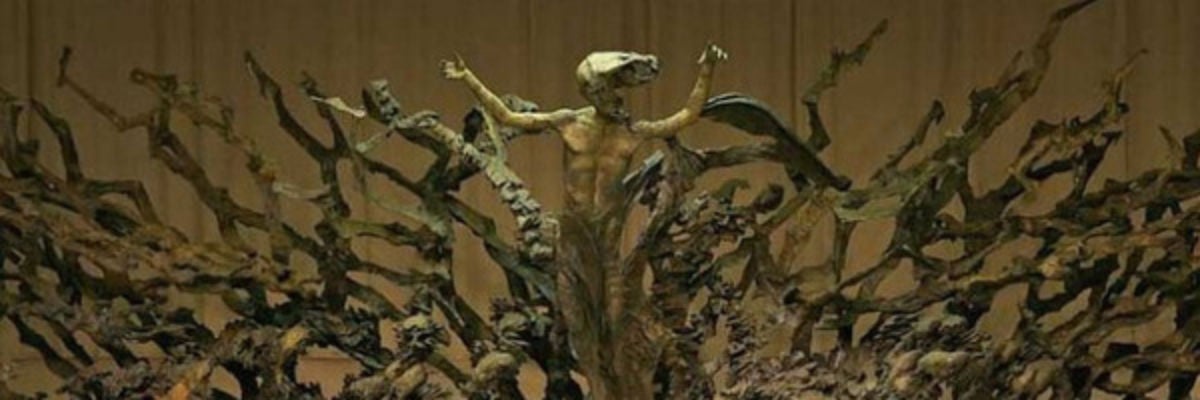
Question:
Answer:
It sounds as if you’re referring to the large, modern artwork of the resurrected Jesus, a backdrop to the pope’s weekly audiences when they are held in the auditorium during inclement weather.
The sculpture is the work of Pericle Fazzini, an Italian artist who was asked to design something for the modern auditorium. Fazzini responded with The Resurrection, which depicts Jesus rising from a nuclear-bomb crater, a work Pope Paul VI unveiled in 1977. As the Associated Press reported in a 1987 obituary for Fazzini: “Suddenly there came to me the idea of Christ preaching peace for 2,000 years and the place where he prayed for the last time: the olive grove of Gethsemane,” said Mr. Fazzini in a book about the work. “I had the idea of depicting Christ as if he were rising again from the explosion of this large olive grove, peaceful site of his last prayers. Christ rises from this crater torn open by a nuclear bomb; an atrocious explosion, a vortex of violence and energy.”
The Resurrection is molded in red bronze and yellow brass and measures 66 feet by 23 feet by 10 feet.
Even if some people don’t like Mr. Fazzini’s depiction, there is no doubt that his work presents the resurrected Jesus, not a “serpent idol” or something demonic.
For information about spiritual warfare, check out Demons, Deliverance, and Discernment by Father Mike Driscoll



